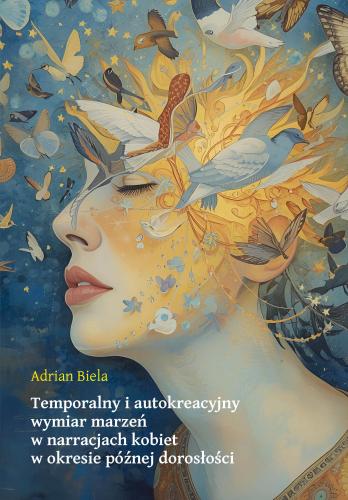Temporal and self-creative dimensions of dreams in the narratives of women in late adulthood
Keywords:
self-creation, temporality, dreams, activity, old age, quality of lifeSynopsis
The ability to create and fulfill dreams is inherent to every person, regardless of their age, origin, appearance, education, or other factors. In my considerations, I focused on the self-creative and temporal structure of dreams in relation to the lives and activities of women in late adulthood (including their spirituality). The subject of my research was therefore the dreams of these women. The aim of my research was to show the temporal perspective of dreams – the form of changes in dream projects in the process of lifelong self-creation (past, current, and future intentions). I asked three research questions.
1. To what extent did dreams contribute to the creation of the senior women’s self?
I sought to determine the essence of dreams according to the women surveyed. I described their key dreams in the past, present and future. I indicated what significance these dreams had in the life choices of the surveyed persons. I referred to the periods of growth of the surveyed persons - childhood, early adulthood, middle adulthood and late adulthood and key spheres in human existence - family, education, work, health and physicality as well as free time, culture and social coexistence.
2. How do the surveyed women balance their lives from the perspective of fulfilling or not fulfilling their dreams?
The second question referred to the factors that stimulate the fulfillment of dreams, including specific people. I also wanted to recognize the barriers to selfcreation. Then I moved on to the description of life satisfaction and contentment in relation to the dreams that were created. I was interested in the level of satisfaction of senior women with their own activity while fulfilling their dreams.
3. What attitude do the surveyed senior women adopt towards their own dreams – past, present and future?
The third question concerned the reflections of the surveyed women on their fulfilled and unrealized dreams. I indicated the objects and directions of human dreams in a time perspective. I illustrated key dreams, changes in dreams during the course of an individual’s life and diagnosed whether there are dreams from the past that the surveyed people would like to fulfill in the future.
In my research on the dreams of senior women, I used a qualitative paradigm. I conducted the research using the multiple case study method. I chose the technique of an unstructured, individual interview. The unstructured interview allowed the subjects to express themselves and to delve into their personal spirituality. The research was conducted among participants of senior clubs and students of the University of the Third Age. Five women participated in the research, conducting a lively dialogue with me.
During the research and during its analysis, I found out how important dreams are in the self-creation of an individual. Thanks to their dreams, the Narrators were open to potential possibilities of development and fulfillment. They were active creators of their lives. They created themselves and were even able to overcome their limitations. Therefore, they presented a constructive attitude overcoming crises and worries. Their dream projects were influenced by individual, social and political experiences (life history). Their personality structure, lifestyles, economic and living conditions, level of motivation and willingness, acquired knowledge, beliefs and other factors clearly influenced dreams - their creation and realization. The entire personal and unique experience of dreams by the examined women, as a factor in self-development, is the content of this work.



